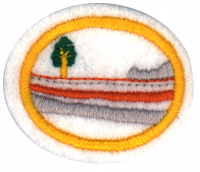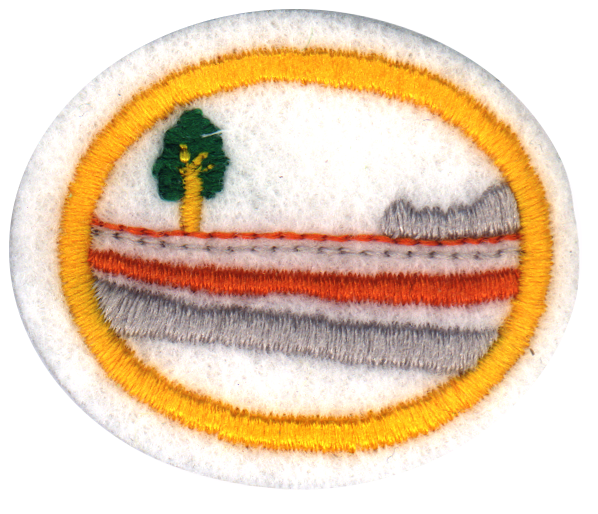Respuestas para la especialidad JA de Suelos y terrenos
Nivel de destreza
1
Año
2006
Version
21.12.2025
Autoridad de aprobación
Asociación General
1
2
3
4
4a
4b
4c
4d
4e
4f
4g
4h
4i
4j
4k
4l
5
6
6a
Aridisols (or desert soils) are a soil order in USA soil taxonomy. Aridisols (from the Latin aridus, for “dry”) form in an arid or semi-arid climate. Aridisols dominate the deserts and xeric shrublands which occupy about one third of the Earth's land surface. Aridisols have a very low concentration of organic matter. Water deficiency is the major defining characteristic of Aridisols. Also required is sufficient age to exhibit sub-soil weathering and development. Imperfect leaching in Aridisols often results in one or more subsurface soil horizons in which suspended or dissolved minerals have been deposited: silicate clays, sodium, calcium carbonate, gypsum or soluble salts. These subsoil horizons can also be cemented by carbonates, gypsum or silica. Accumulation of salts on the surface can result in salinization.
6b
Brown earths are mostly located between 30° and 55° north of the Equator. The largest expanses cover western and central Europe, large areas of western and trans-Uralian Russia, the east coast of America and eastern Asia. Here, areas of brown earth soil types are found particularly in Japan, the Koreas, China, eastern Australia and New Zealand.
6c
Oxisols are an order in USDA soil taxonomy, best known for their occurrence in tropical rain forest, 15-25 degrees north and south of the Equator. Some oxisols have been previously classified as laterite soils.
7
Find a place where you have permission to dig a 2-foot deep hole. In the United States, call before you dig. Digger's Hotline, One-call or Miss Utility are services that allow construction workers to contact utility companies, who will then denote where underground utilities are located via color-coding those locations. As required by law and assigned by the FCC, the 8-1-1 telephone number will soon be used for this purpose across the United States.
8
Listed below are a few types of soil you might collect. For a more complete listing of soil types, see the Types of soil category in Wikipedia.
Sandy soil
Sandy soil consists of relatively large particles (sand). It has a gritty texture. Sandy soil, if mixed well with organic matter, is a good medium for growing plants as long as it is kept moist. Because the particles are so large, water and air easily penetrate the soil and reach the roots of plants. However, this same quality allows the water to drain away almost immediately (which is why it must be kept moist if used for agriculture).
Silty soil
Silty soil is like sandy soil except that it contains finer particles and more nutrients. It has a darker color as well. Silty soil is one of the best soils for agriculture because like sandy soil, it allows water and air to penetrate to the roots, but unlike sandy soil, it hold the water longer.
Peat forms when plant material, usually in marshy areas, is inhibited from decaying fully by acidic and anaerobic conditions. It is composed mainly of marshland vegetation: trees, grasses, fungi, as well as other types of organic remains, such as insects, and animal corpses.
Peat is soft and easily compressed. Under pressure, water in the peat is forced out. Upon drying, peat can be used as a fuel. Peat is also dug into soil to increase the soil's capacity to retain moisture and add nutrients. This makes it important agriculturally, for farmers and gardeners.
Chalky Soil
Chalky soil is highly alkaline. It is composed primarily of the mineral calcite. Because chalk is porous it can hold a large volume of ground water, providing a natural reservoir that releases water slowly through dry seasons.
References
- http://soils.usda.gov/
- http://www.fao.org/WAICENT/FAOINFO/AGRICULT/AGL/agll/wrb/newkey.stm#DURISOLS
- Bloom, Arthur L. (1978). Geomorphology: A Systematic Approach of Late Cenozoic Landforms. Prentice-Hall, Inc., Englewood Cliffs, New Jersey. ISBN 0-13-353086-8
- Press, Frank and Raymond Siever. (1978). Earth.W.H. Freeman & Company. San Francisco. ISBN 0-7167-0289-4.


